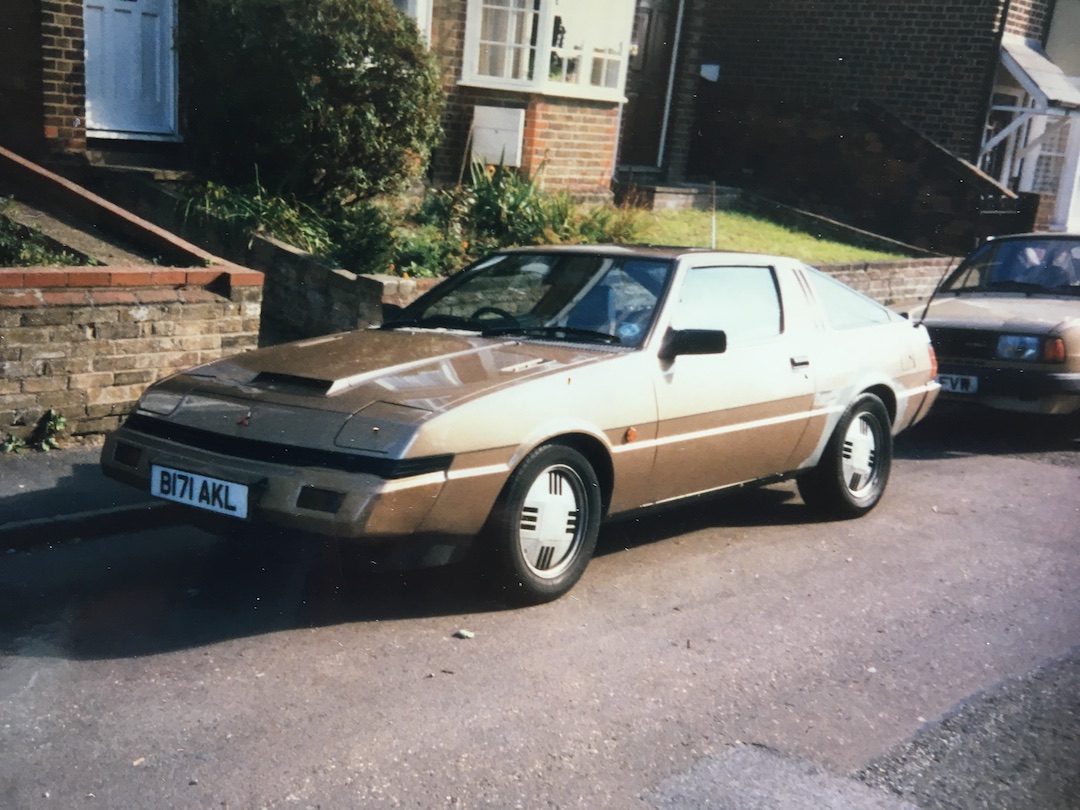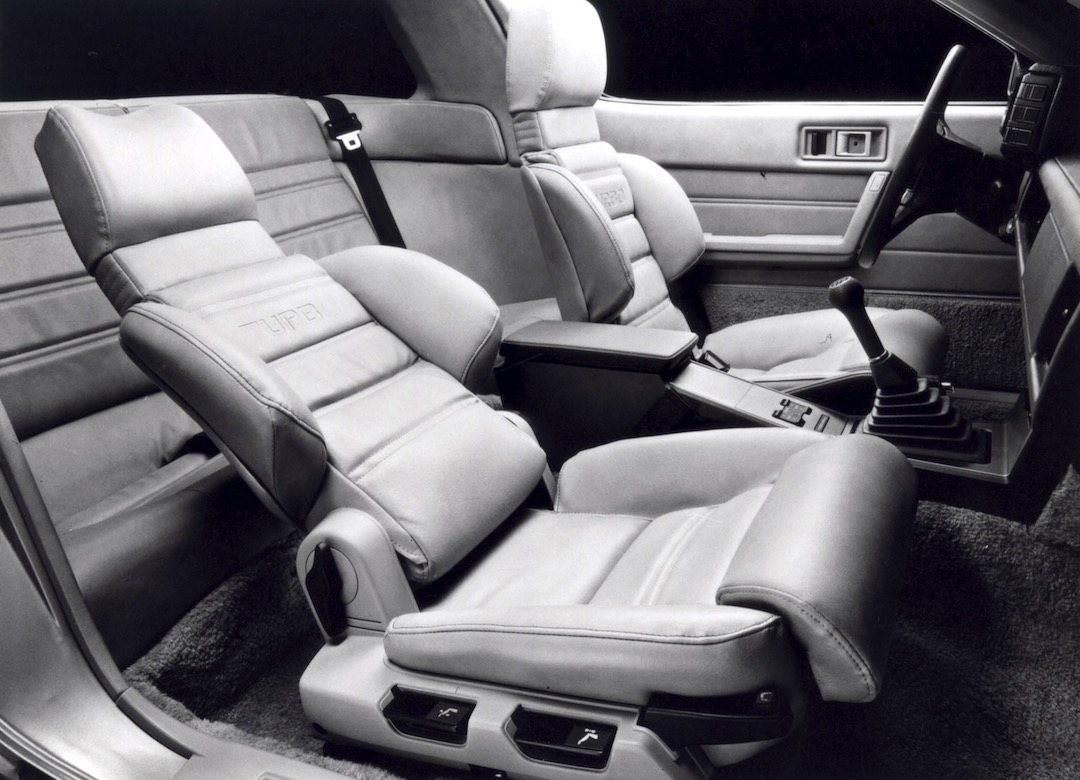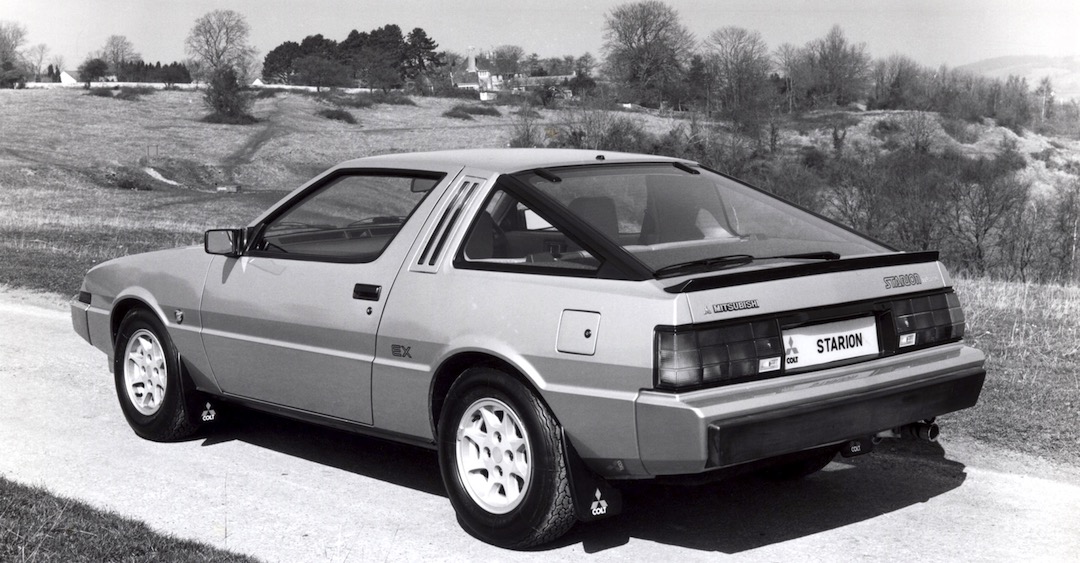"Another car maker admits to getting things wrong with emissions testing. Does that mean brand loyalty evaporates? Mitsubishi's Lancer Evolution was never a strong contender for 'green car of the year'. But we still love it. Mitsubishi might not be "

Starion
Martin remembers his Mitsubishi Starion
As an increasingly old git I look back on my life with a sense of ‘why did I do that?’ bafflement.
These thoughts range from foot-in-mouth social encounters that still make me blush to some of the cars I’ve owned. A skanky Mitsubishi Starion coupe that came my way in the mid-1990s is a prime example. What insanity drove me to own that?
The Starion was both macho and a bit weird. The macho element came from it having a turbocharged 2.0 engine that had first seen the light of day in the 1980-launched Lancer EX 2000 Turbo saloon, which was briefly the fastest production car to 60mph you could buy (think an eye-watering 7.1sec seconds).
The Starion essentially took its mechanical bits (the first to combine a turbo with fuel injections, they later found their way into the much vaunted early 90s Evo Lancers) and clothed them in a coupe body that didn’t do contours. Clashing straight lines were its metier and with its pop up headlights raised the car had a surprised pond animal look to it.

If the exterior wasn’t conventionally beautiful, the interior had an aesthetic that Giles Chapman, who supplied some of the period photographs of the car you see here, neatly encapsulated as ‘Space 1999.’ This was a 1970s science fiction series involving spaceships with Cubist, minimalist seating and lots of buttons to press. So it was with the Starion’s fixtures and fittings.
Before describing the car I owned, let’s get its peculiar model name out of the way. Mitsubishi always denied that ‘Starion’ was a corruption of ‘Stallion,’ because the latter was allegedly a tongue twister if you were Japanese, instead claiming that the word is a contraction of ‘Star of Orion.’ You can decide if this is a load of contraction or not.
Mine cost £500. It was metallic gold outside and surgical stocking brown within, and was being sold by a bull-necked man who looked like a retired nightclub bouncer. I first saw the car sagging against a kerb in a run-down housing estate near Heathrow airport.

Every fibre of my being should have screamed ‘no!’ but for some reason, I bought the old heap. It never actually broke down, had anti-lock brakes, a limited slip diff and went like stink. It had heroic levels of turbo lag, so the boost came in with a bang, but every suspension bush was tired, so the handling was less than precise.
Nor was the steering. The car had covered an interstellar mileage, and there was rather a lot of play, the product of the steering having tired re-circulating balls –these days I know the feeling. Add to that a rusty bottom that cost a fortune to weld, and a gear change that could have graced a vintage Ferguson tractor, and it didn’t take long for the allure to wear off.
Whatever its merits when new –when some of its fans reckoned the car was a cut-price rival to the Porsche 944 – the one I bought was a clapped out money pit bought by an idiot.
So I sold it to a bloke with a Lancer Turbo who wanted the bits. That was 20-something years ago and the Lancer was already a collector’s item. Now they are highly prized, so there’s a chance that even now, internals from my long dead Starion are gracing one of the 14 valuable, cherished UK survivors.

Black and White images:
@ChapmanOnCars on Twitter
CLICK TO ENLARGE










